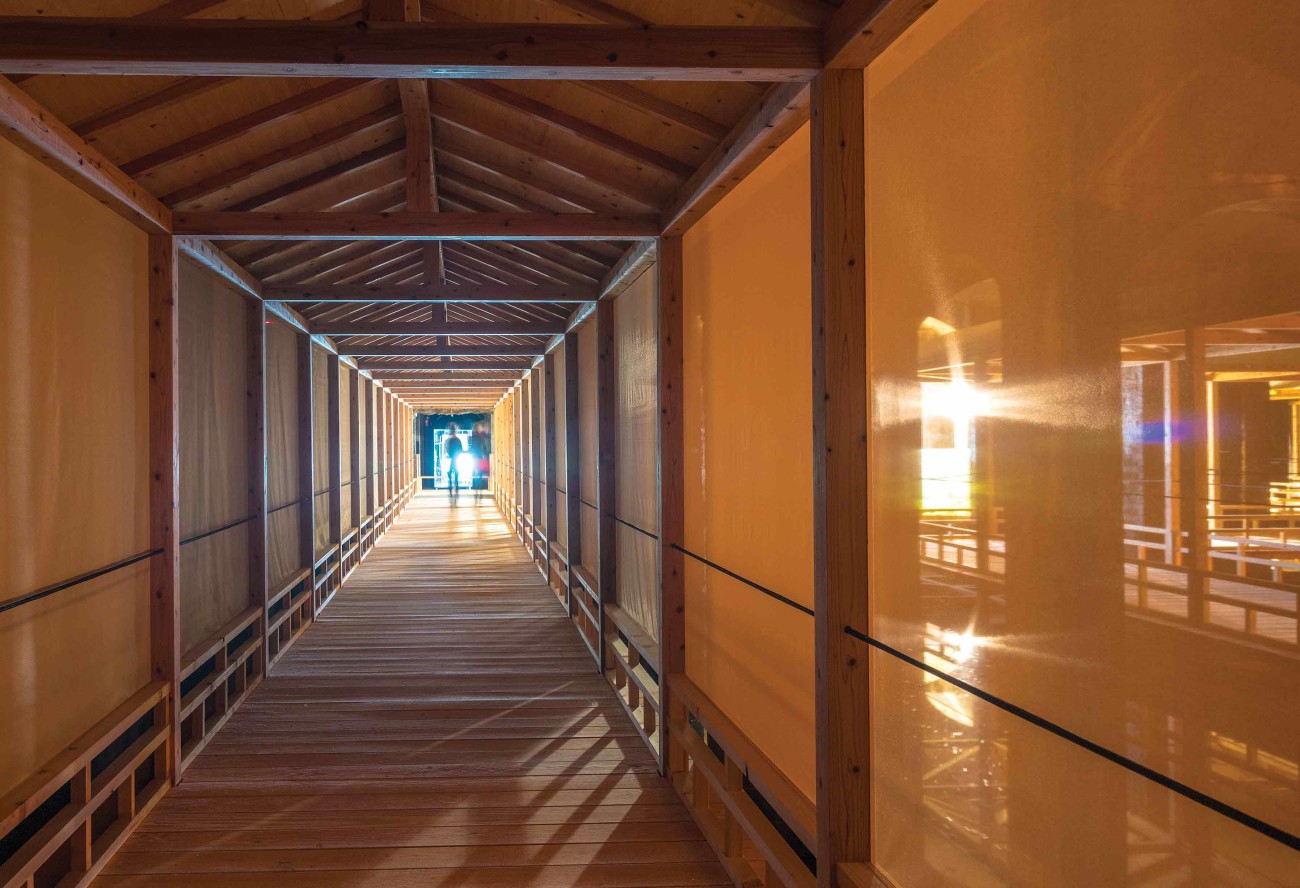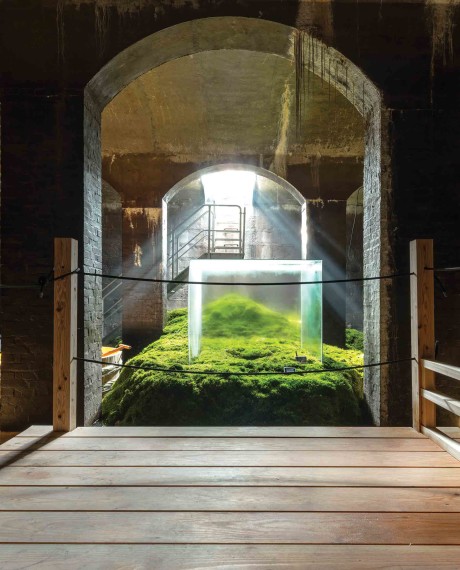
In 2017, Japanese architect Hiroshi Sambuichi created a breath-taking underground world in The Cisterns, honouring the natural elements of air, water and daylight. For the exhibition, we contributed with solid Douglas planks for the elegant wooden walkway.
Photo: Jens Markus Lindhe
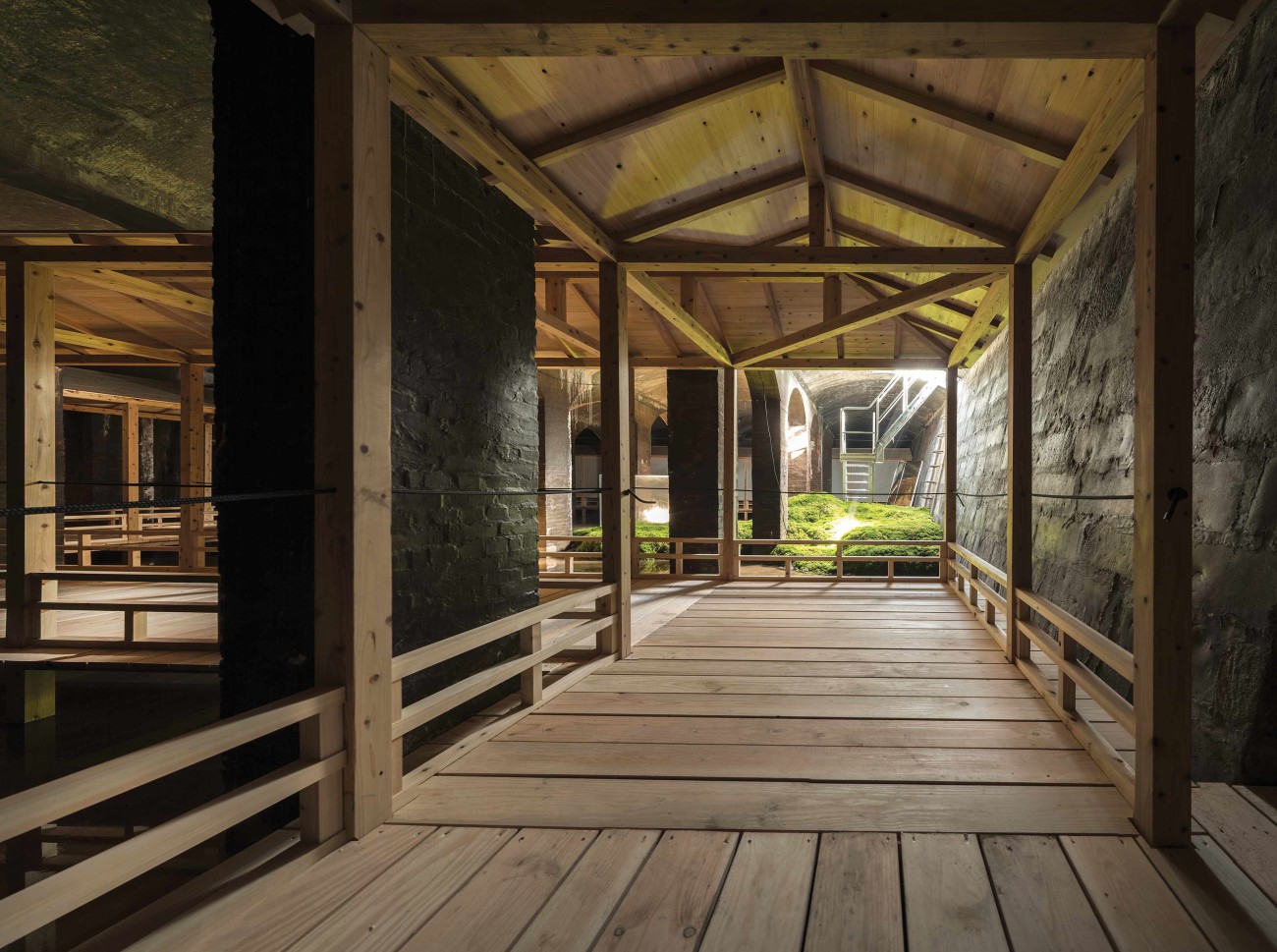
Located under Frederiksberg Hill in the heart of Søndermarken Park lies The Cisterns, a long forgotten subterranean reservoir, which functioned as Copenhagen’s fresh water supply until 1933 and could hold as much as 16 million litres of clean water. In 1996, the reservoir was turned into an exhibition space, and today, The Cisterns is an integral part of Frederiksberg Museums, working as a venue for art exhibitions and other events where the singularity of its architecture and atmosphere remains a core attraction.
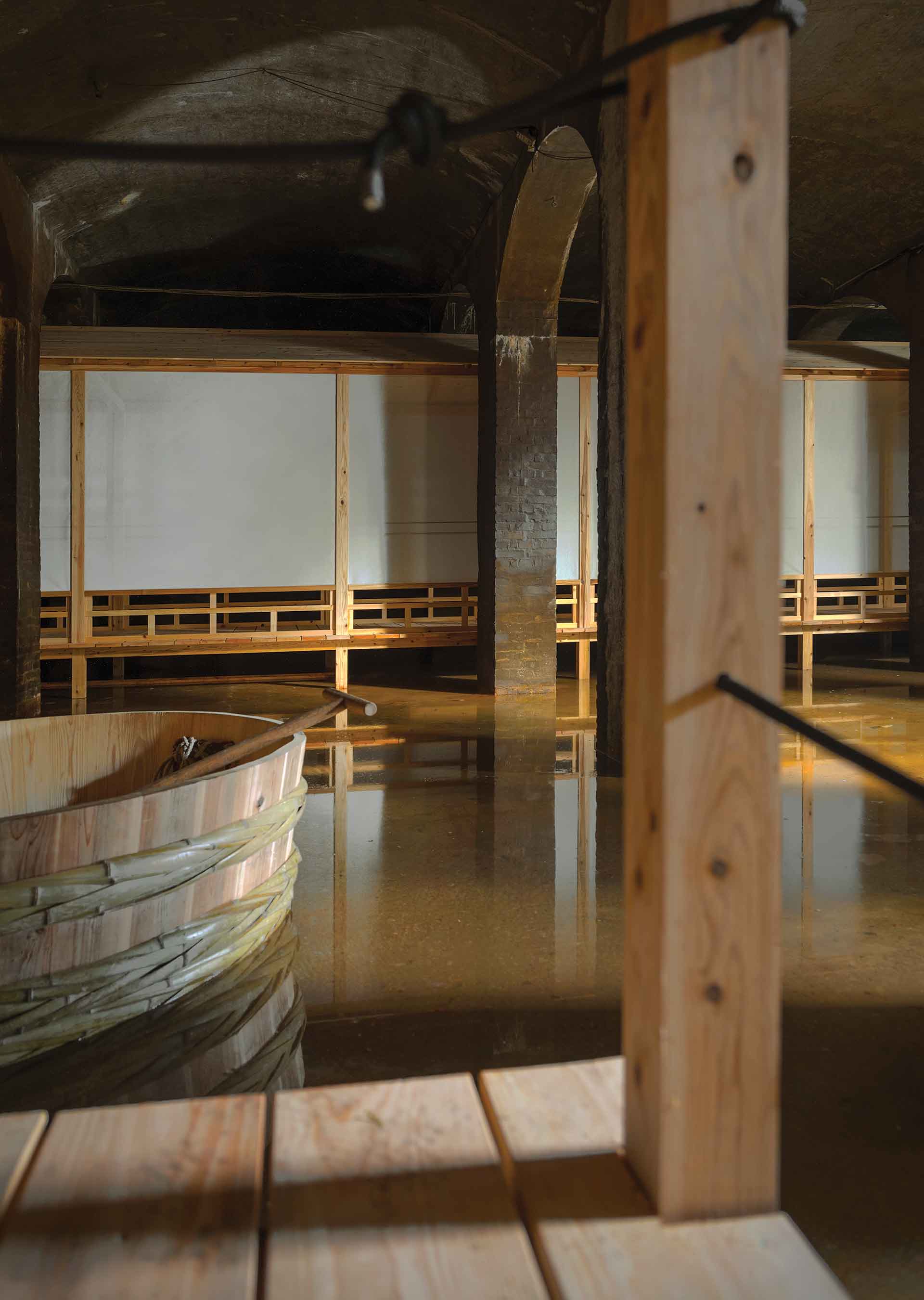
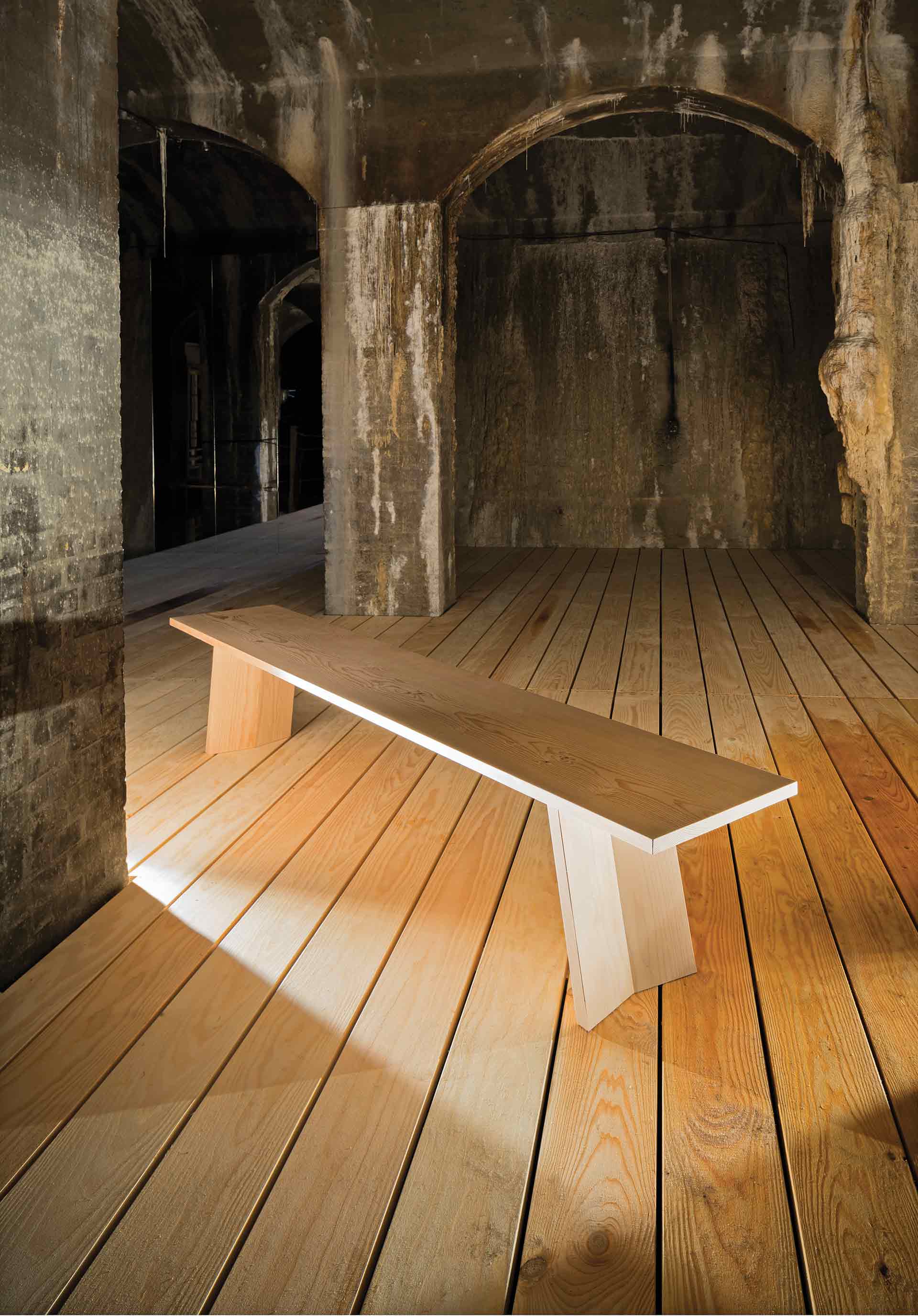
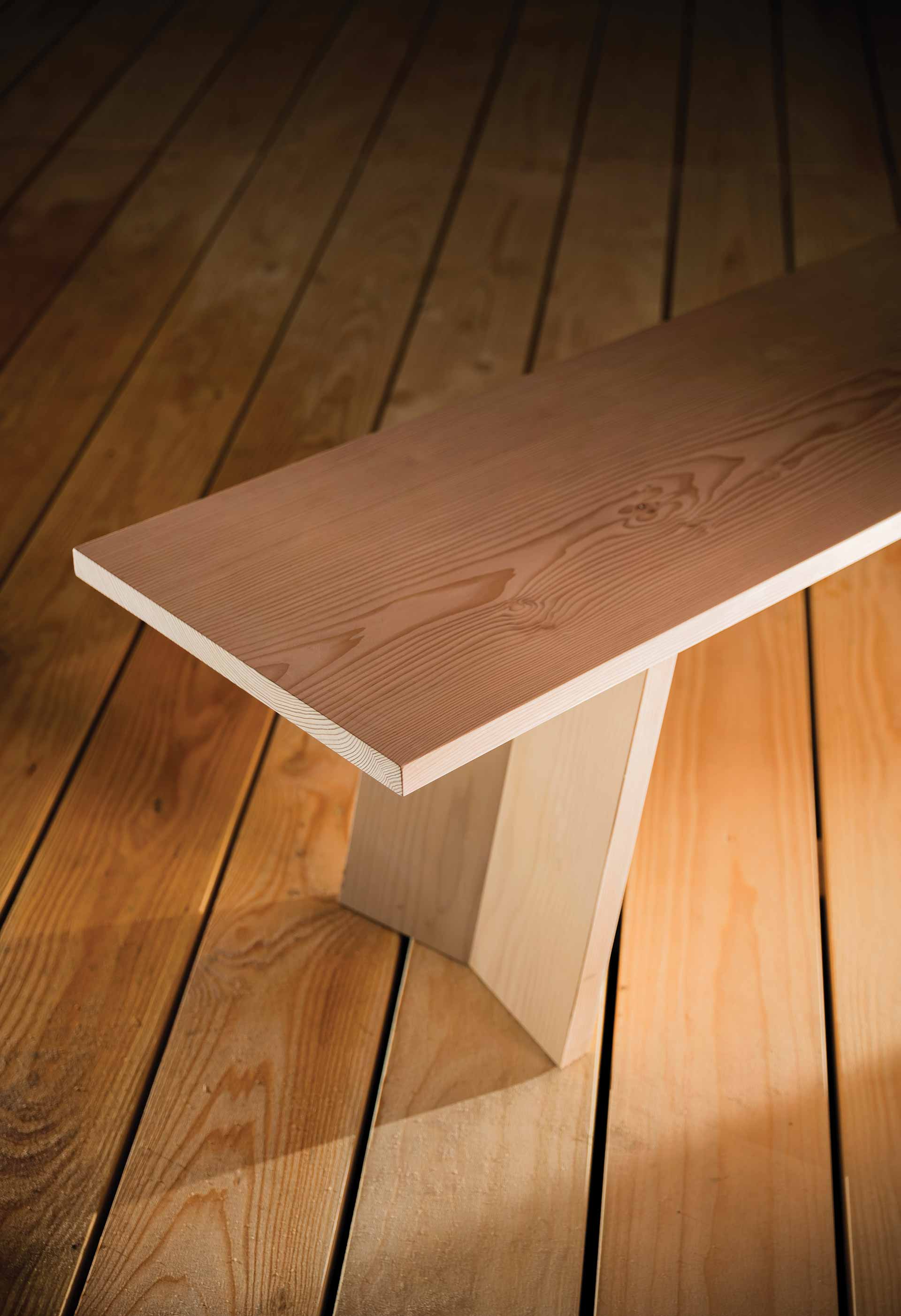
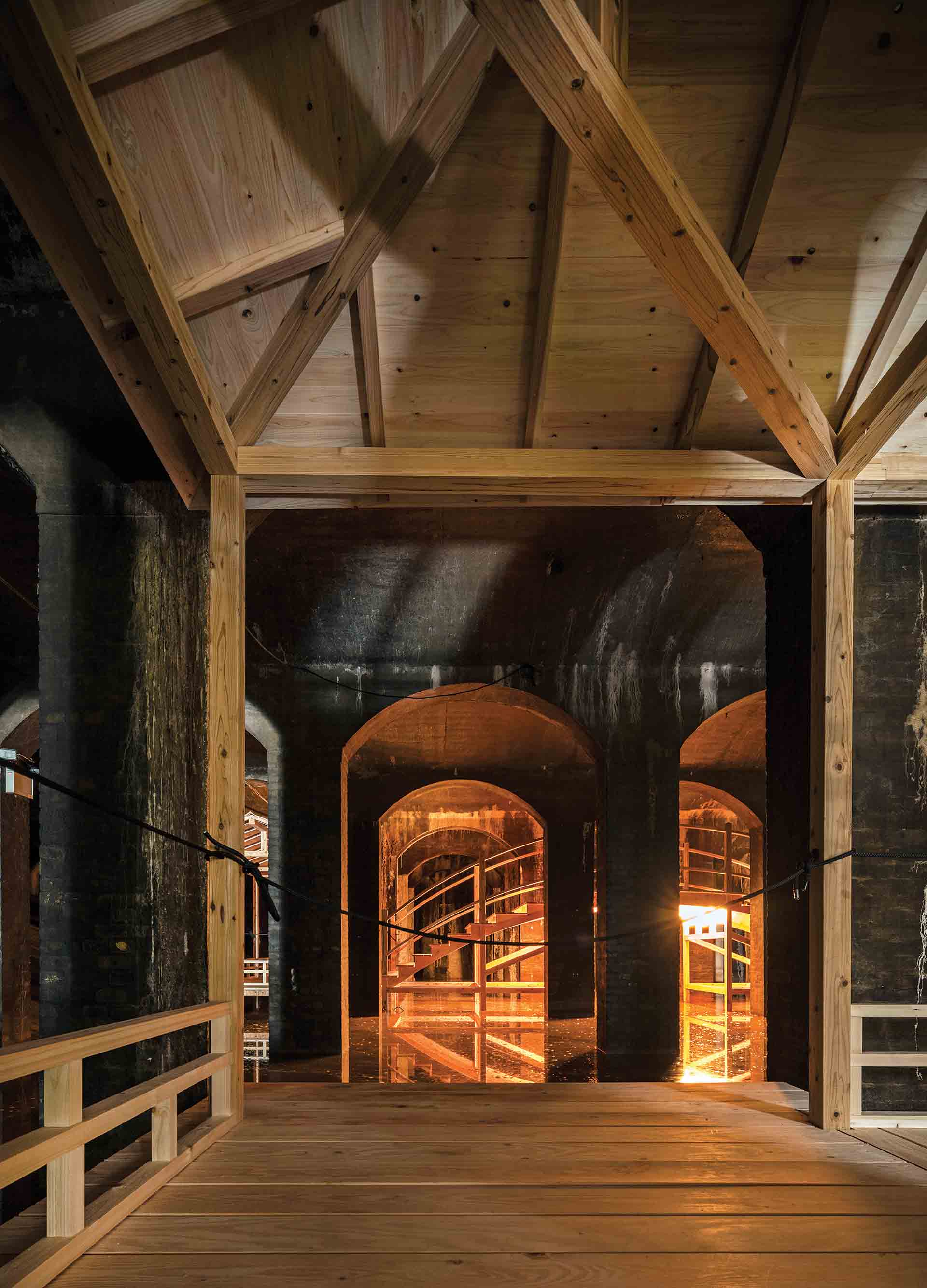
The Cisterns is the only dripstone cave in Denmark. The natural formation of stalactites and stalagmites is not uncommon for concrete structures, yet nowhere else can offer the sheer magnitude and diversity of those found here. This makes the Cisterns anything but a regular gallery or art museum, and back in 2017, a visit to The Cisterns was an extraordinary journey through an underground sea of light and darkness as the monumental halls had been modified by the internationally acknowledged Japanese architect, Hiroshi Sambuichi.
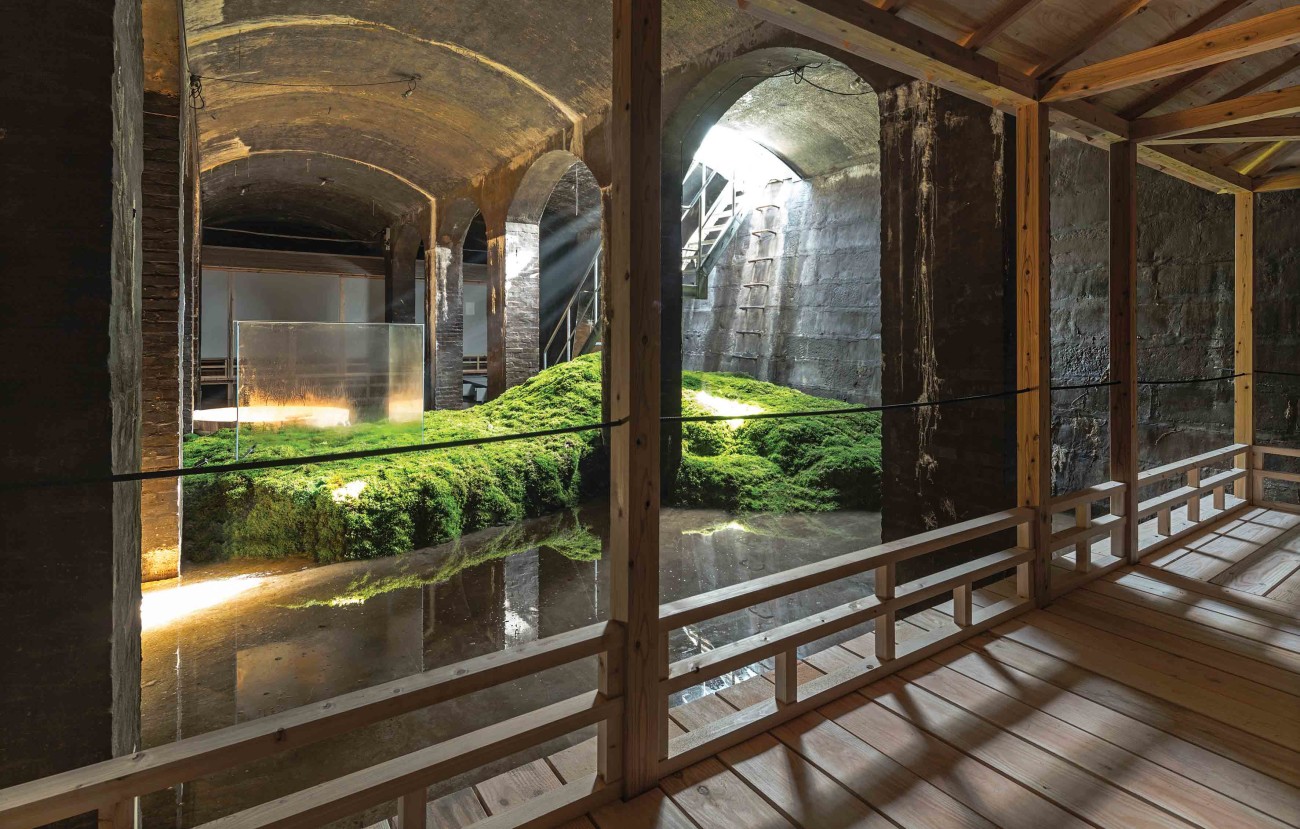
With his first major exhibition outside Japan, Sambuichi scrutinized the depths of The Cisterns and the changing expression of the surrounding park, Søndermarken, through the changing seasons. The numerous investigations took form as a wondrous art installation, and once again, water filled the former water reservoir. In line with much of Sambuichi’s earlier work, the exhibition was only illuminated by the sun. The limited skylight from existing and sporadic openings in the ceiling was reflected with mirrors and showed the way along the passage of the sea and through the spaces.
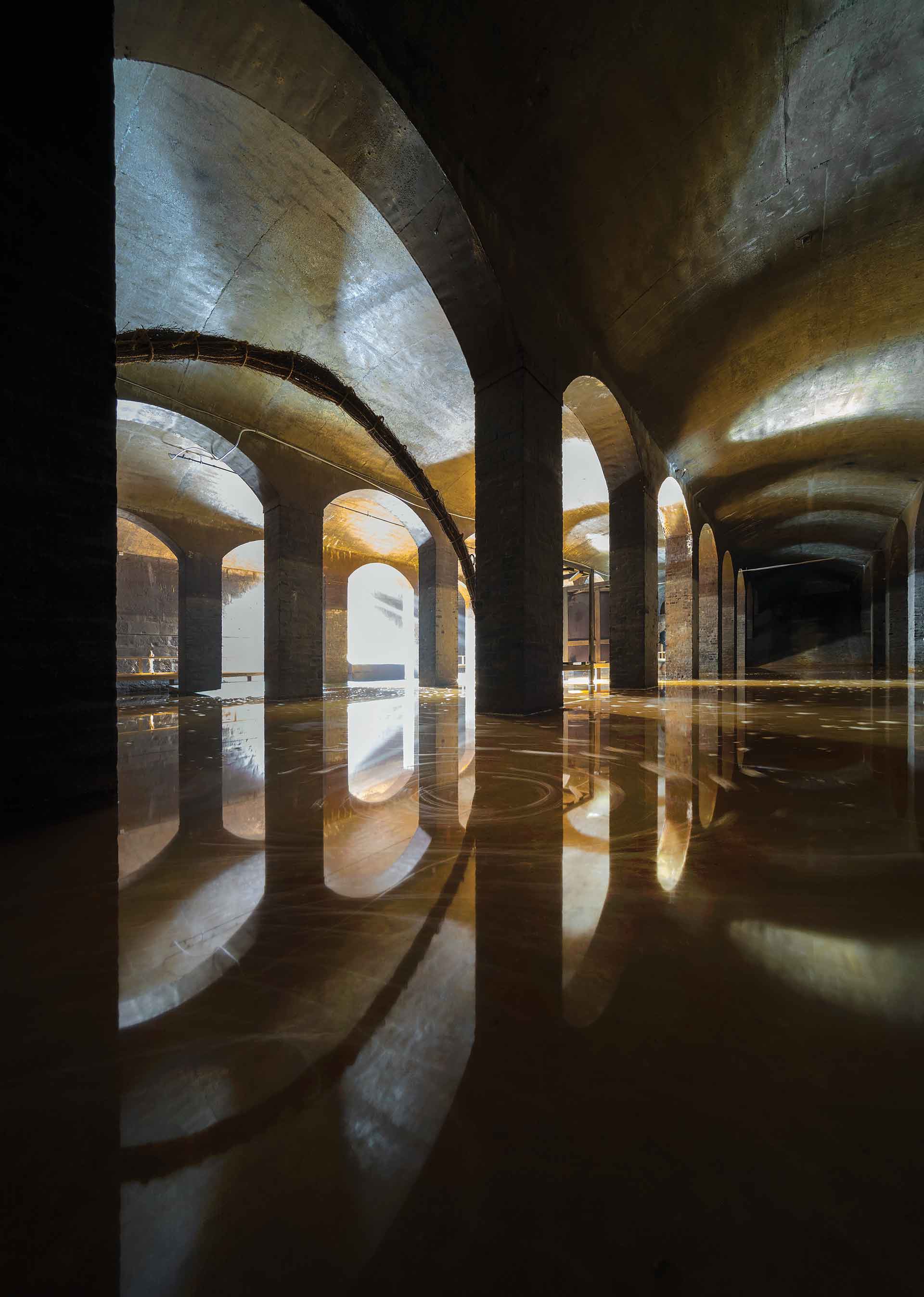
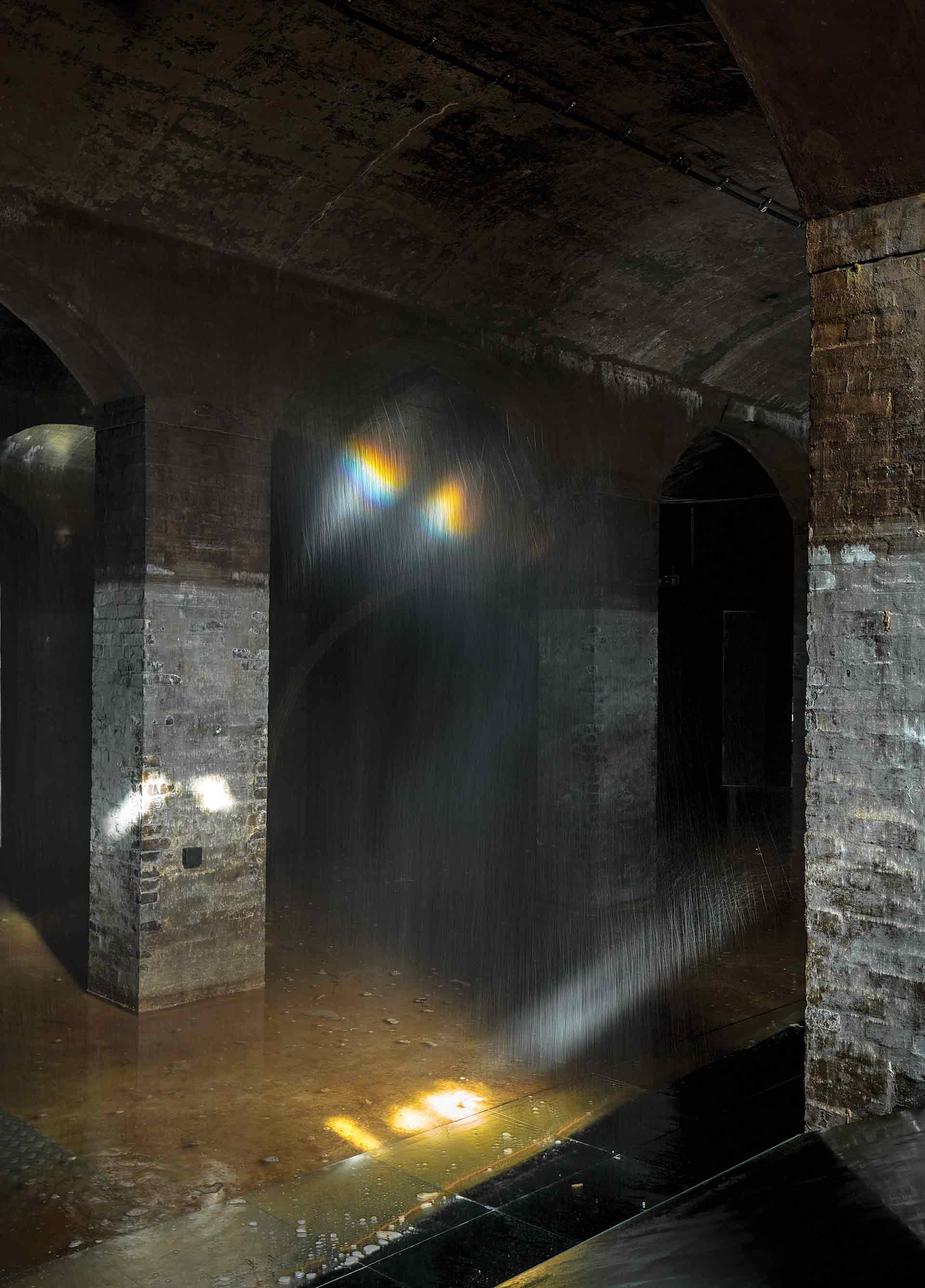
When crossing the underground sea, visitors walked an interpretation of the Japanese Itsukushima Shrine on the island of Miyajima. The elegant wooden walkway featured an inspiring meeting between Danish and Japanese design- and material traditions, as the construction was made of imported Japanese cedar and cypress, while the cladding was in solid Dinesen Douglas planks. All made in-situ by a team of eight master carpenters from Japan.
The exhibition was part of the official celebration of the 150th anniversary of diplomatic relations between Denmark and Japan.
